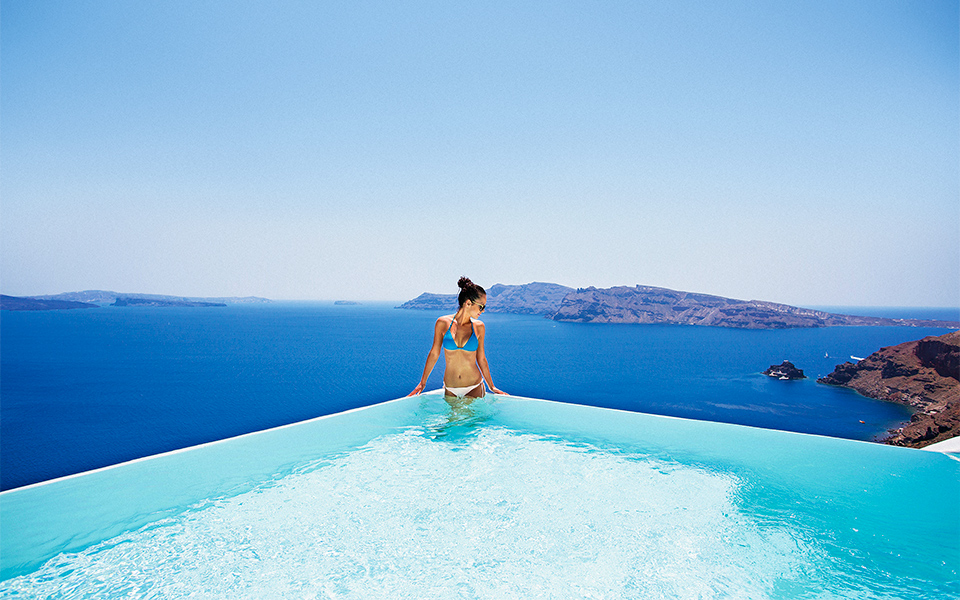It Has One of the World’s Greatest Views (see above)
This vista, created by the strongest volcanic eruption in the past 10,000 years, is by far the most valuable “commodity” that Santorini has. For some, it may awaken passions; for others, it might soothe them. It may bring out the artist in you, or the philosopher; the dreamer, or the poet. It’s something for which you might pay hundreds, or even thousands, of euros, enjoying it in the comfort of a luxury suite hanging over the edge of a cliff. It may form the backdrop to the most significant, romantic and magical moment of your life.
This view – and the setting around it – attracts 2 million visitors per year. It’s a guaranteed magazine cover-shot, a surefire ticket to hundreds of likes on your next selfie, a memory that will stay with you for a lifetime. It is the fundamental reason why Santorini is considered one of the most beautiful islands on the planet, and it’s also one of the greatest luxuries one can enjoy in life.
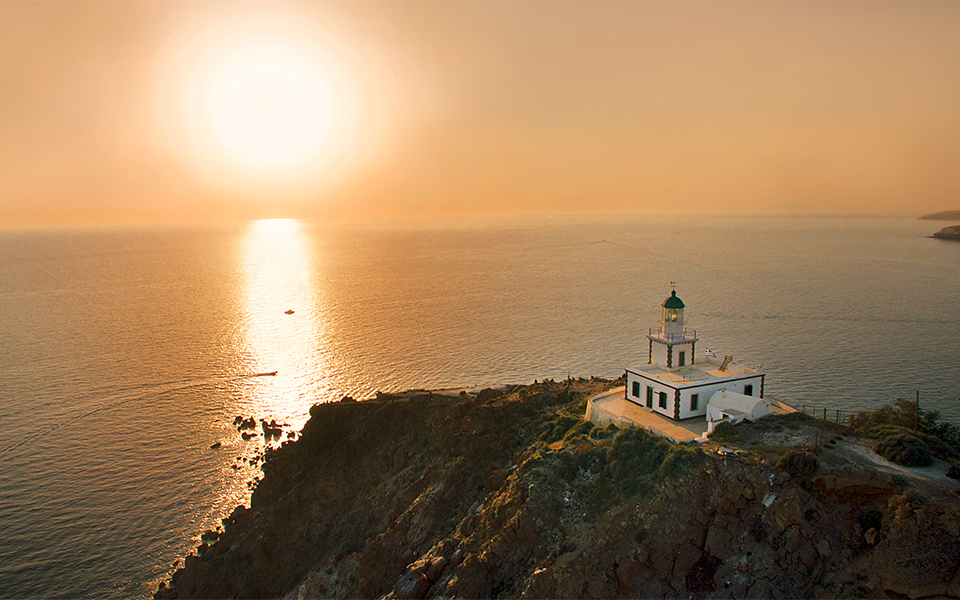
© Dimitris Vlaikos
It has one of the best sunsets in the world
There is nothing metaphysical about a sunset: the Earth rotates, day slowly gives way to night, and the sun sinks over the horizon. As it does so, its rays must travel ever-larger distances through the atmosphere before reaching our retinas, meaning that the blue, violet, green, yellow and orange wavelengths of light are increasingly filtered out, leaving only red light. The sky changes color, shadows lengthen and the landscape is transformed.
All of this is more magical on Santorini because the viewing “gallery” is located at the top of a cliff and the burning disc of the sun appears to sink into the sea. The most famous spot from which to watch the sunset is in Oia, but be aware that during high season, the thronging crowds can detract from the magic of the moment.
Locals recommend Faros (Lighthouse) on Akrotiri, the westernmost tip of the island, for reasons that can be seen in the above photograph. Firostefani, Imerovigli (the island’s highest village) and Profitis Ilias (the island’s tallest peak) are also good options.
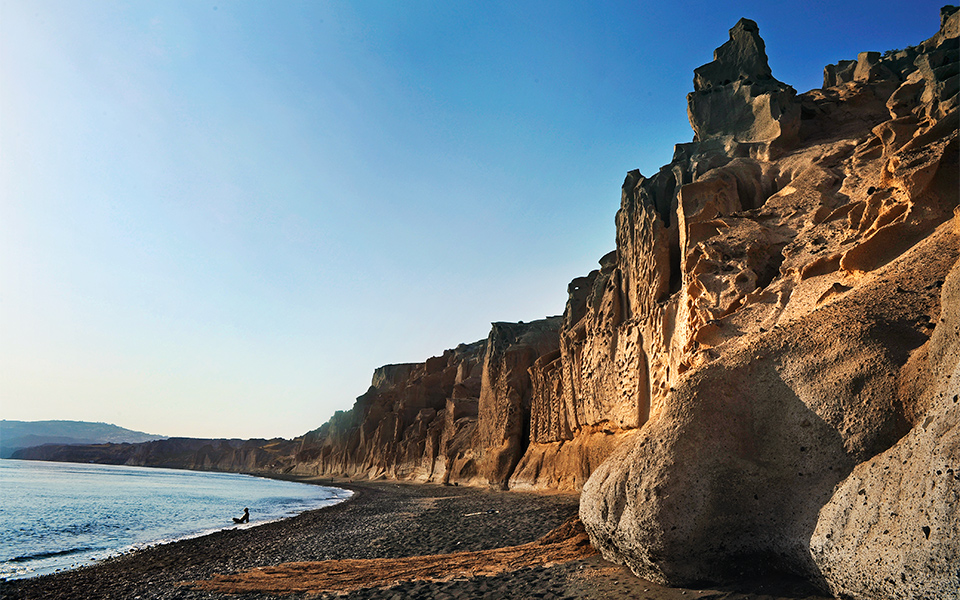
© Maro Kouri
Swimming off its beaches is a #LifeGoal
Santorini is ringed by amazing beaches, with something for everyone. Perhaps the most dramatic of them all is Vlychada, pictured here. Its charm doesn’t end with its stunning cliffs and generous expanse of sand affording welcome isolation; there’s also an excellent beach bar.
If you’re looking for something a little more lively, head a little further north to Perissa and Perivolos, where the crowd is young and the many bars and cafes are jumping, or beyond there to Kamari, a tourist hotspot with watersports and with all kinds of stores along the coastal road.
Above here, head to Monolithos for a family-friendly beach with shallows and a lifeguard on duty. If you turn west instead of north as you leave Vlychada, you’ll pass Red Beach first (unfortunately closed due to falling rocks) and then White Beach, both stunning stretches of coast near the site of Akrotiri.
Continuing west, you’ll reach Mesa Pigadia with its impressive rock formations and excavated shelters. All the way at the other end of the island are the beaches of Koloumbo, Pori (with a small harbor and some tavernas) and Baxedes, which is particularly popular with families and windsurfers.
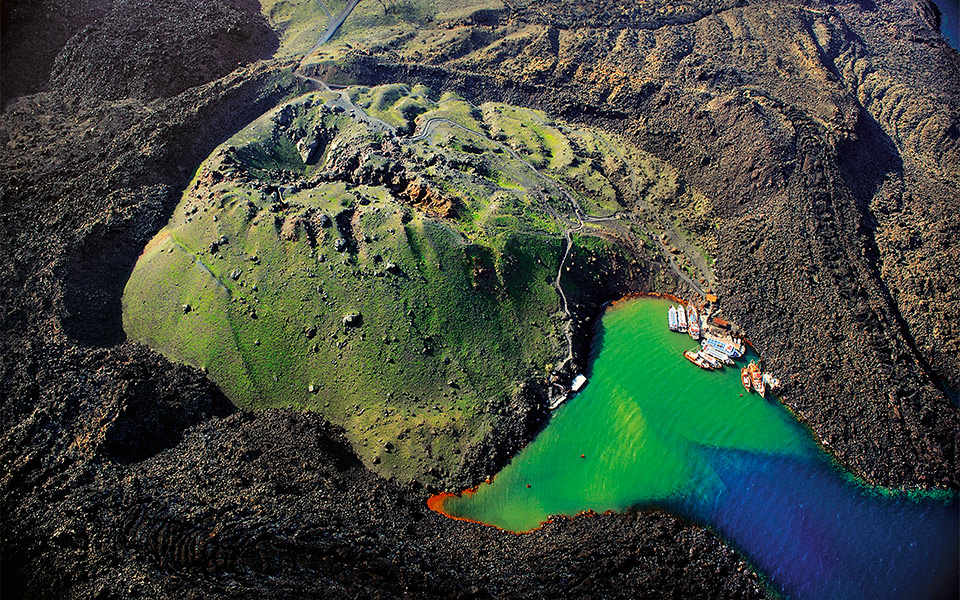
© Giannis Giannelos
Visiting the island that is a growing volcano is an otherworldly experience
In springtime, even Nea Kameni, Santorini’s volcano islet, sheds its look of unworldly ruggedness and dons a cloak of wild shrubs and flowers that grow from the crags of its oldest formation. But whatever time of year you’re in Santorini, you absolutely must visit this young island (a mere 430 years old), with the newest volcanic surfaces in the Eastern Mediterranean, formed just 67 years ago.
A listed natural monument, an active volcano that has given us three eruptions in the last century, an official Geological Park since 2003 and an ever-popular stop for catamarans on day cruises, Nea Kameni is indisputably an authentic experience. Its uneven terrain will test your mettle (a hat, sunscreen and a bottle of water are essential in the summer), the steam vents near the central crater that eject gases at temperatures as hot as 95° C will wow you, and its thermal springs will invite you to dive into the water – but it’s a good idea not to wear your nicest light-colored bathing suit!
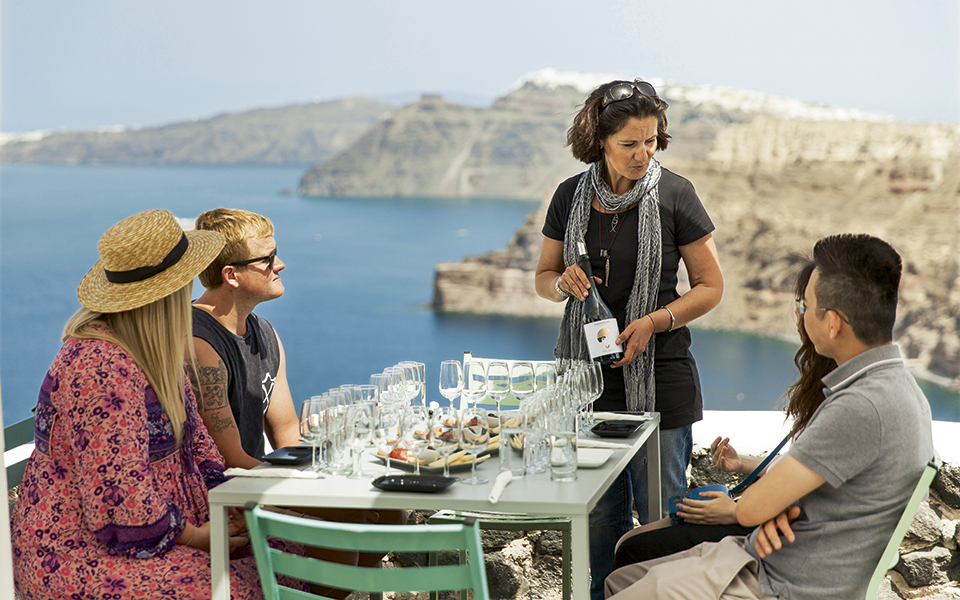
© Dimitris Vlaikos
Santorini’s wine is happiness in a bottle
The Assyrtiko shimmers golden in your glass, the sea is spread at your feet and the view from the steep cliffs of the caldera is arresting. You are in Venetsanos (photo) in Megalochori, the island’s first industrial winery, founded in 1949. Similarly memorable wine-tasting experiences can be found all over the island, from Baxes to Perissa, and from Firostefani to Monolithos.
Santorini’s winemakers are exploiting the richness of the local varieties – from indigenous vineyards, vital and productive for centuries – to create quality wines, which have impressed oenophiles and picked up prizes and distinctions worldwide. A tour of the Santorini canaves, or traditional wine cellars, will show you why.
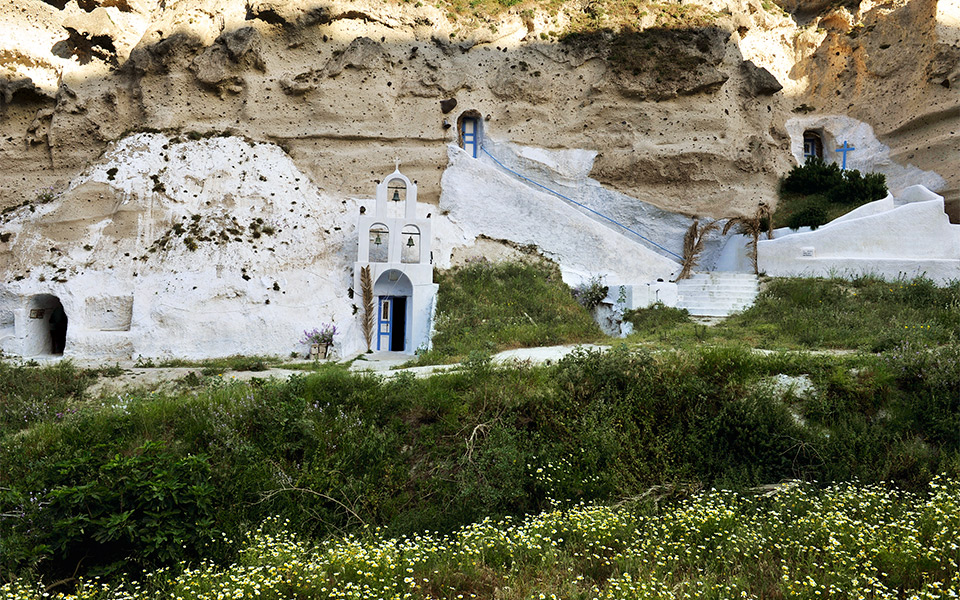
© Vangelis Zavos
The villages gloriously combine the best of the past and present
It’s worth resisting the alluring call of the caldera, with its houses and hotels perched like eagles’ nests along the rim, to discover Santorini’s hinterland and its traditional yposkafa (meaning ‘dugout’) villages, where farming and winemaking once predominated. Built mainly in ravines to offer protection from pirate raids and adverse weather, these villages now represent paradigms of harmonious bioclimatic architecture.
Inhabitants here did not just coexist; they lived close together in complex structures of horizontal dwellings where courtyards, stairs, rooftops, outdoor ovens and chimneys all formed a beautiful, fluid tangle.
Finikia, located within walking distance of Oia, is a typical example of such a village, and many of its buildings have been restored. Walk around its narrow streets and stop in at the courtyard of the Church of Aghia Matrona (built in 1859), which holds a lively church fair every year on October 20th.
South from Fira, Megalochori, boasts the island’s prettiest public square, while further south, just north of Vlychada, is Emporio, which was once Santorini’s biggest village and its center of commerce and trade. Wander around the labyrinth that is its Kasteli area and you’ll understand how this place helped inspire Jean-Paul Sartre to write his 1943 play “The Flies.”

